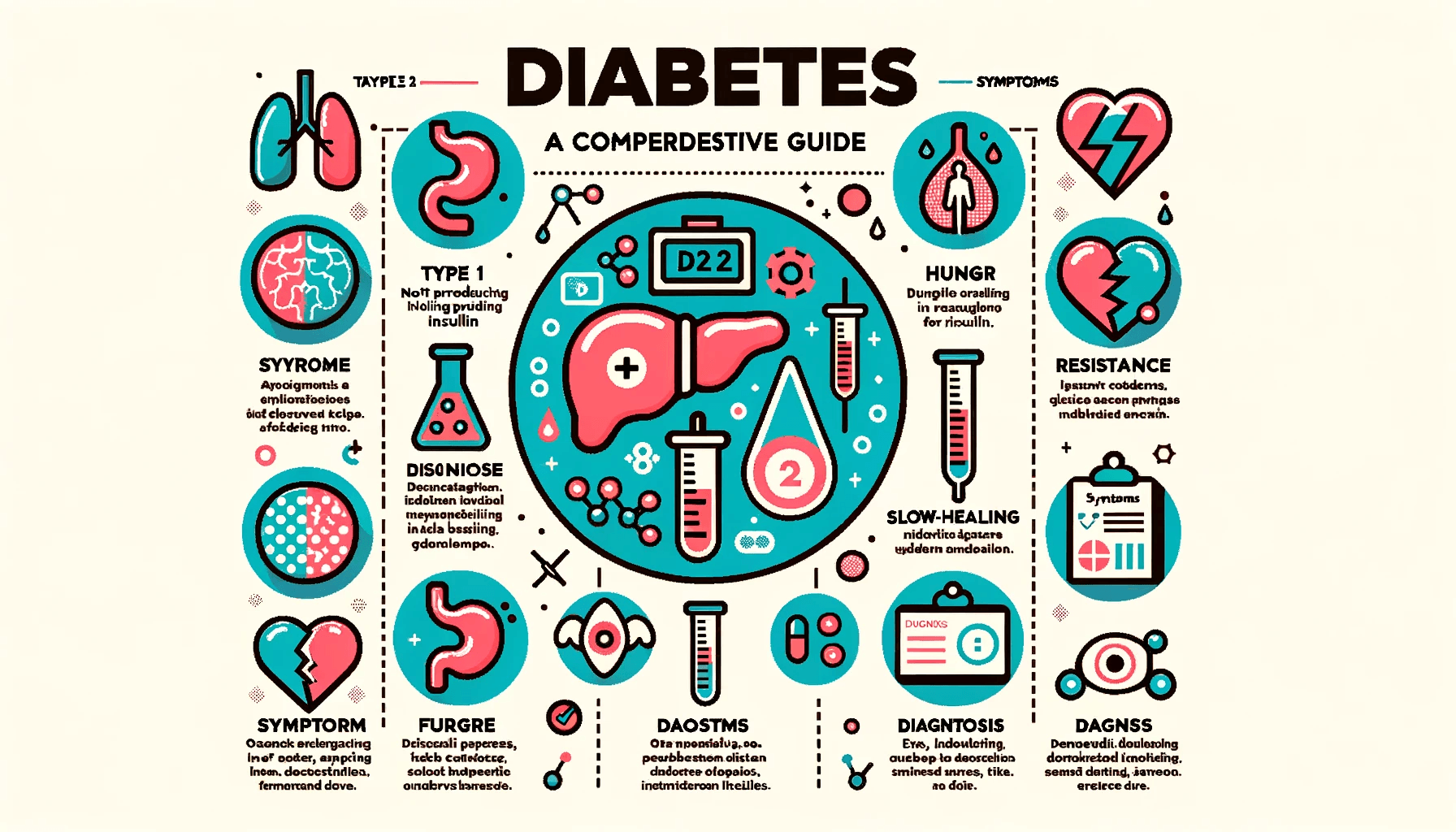
Managing diabetes requires constant vigilance, especially for those who are behind the wheel. Hypoglycemia, or low blood sugar, can create a dangerous situation for diabetic drivers. Fortunately, technological advancements are providing new tools to help mitigate these risks.
One of the most promising developments is an AI model that flags up hypo symptoms to drivers with diabetes. This breakthrough technology offers a critical layer of safety, ensuring that drivers can respond to hypo symptoms promptly.
🔍 Seeking a breakthrough in Type 2 Diabetes management?
Discover our expert insights and innovative approaches on ‘How to Cure Diabetes’.
Click to transform your health journey today!
What you\'ll find in this article?
- What is hypoglycemia and its symptoms?
- How does AI help drivers with diabetes?
- What are the latest advances in diabetes research?
- How effective are multimodal warning systems for diabetic drivers?
- What role does precision medicine play in diabetes management?
- How can voice alerts improve hypoglycemia detection while driving?
- What are the safety precautions for diabetic drivers?
- Questions related to AI model flags up hypo symptoms for safer driving with diabetes
What is hypoglycemia and its symptoms?
Hypoglycemia, commonly referred to as a “hypo,” occurs when blood sugar levels drop below normal. It's a condition that can cause various symptoms, including dizziness, confusion, shakiness, and fatigue. For drivers, these symptoms can be particularly hazardous, undermining their ability to operate a vehicle safely.
Identifying the onset of hypoglycemia can be challenging, especially when concentrating on the road. Symptoms may vary from person to person but often include blurred vision, rapid heartbeat, sudden mood changes, and in severe cases, loss of consciousness.
Early detection is crucial, and that's where AI technology comes into play. By monitoring signs of hypoglycemia, drivers with diabetes can be alerted to take action before their condition impairs their driving ability.








Explore our specialized services in diabetes care 🌟.
From personalized diet plans to effective exercise routines, we have what you need to take control of Type 2 Diabetes.
Visit our services page now!
How does AI help drivers with diabetes?
AI-driven systems are revolutionizing the way diabetic drivers manage their condition on the road. By using deep learning algorithms, these models can analyze a variety of data points, such as driving patterns and eye movements, to detect early signs of hypoglycemia.
Once a potential hypo event is identified, the AI model can provide real-time alerts to the driver. This proactive approach allows individuals to pull over safely and address their low blood sugar levels, thereby preventing accidents.
Moreover, these AI models continuously learn from the driver's behaviors, improving their accuracy over time. This personalized alert system acts as a co-pilot, ensuring that drivers with diabetes stay alert and safe on the road.
What are the latest advances in diabetes research?
Research into diabetes management is moving at an impressive pace. Among the latest advancements is the development of AI tools by teams like the one at LMU Munich. These tools are designed to monitor and predict hypoglycemic events in diabetic drivers, optimizing response times.
Studies have also focused on the effectiveness of continuous glucose monitoring systems (CGMs) that work in tandem with AI technology to provide a comprehensive solution for managing diabetes symptoms in real-time.
Additionally, precision medicine has gained traction as a way to tailor treatments to individual patient profiles. This approach considers the unique genetic makeup and lifestyle of each person, leading to more effective diabetes management strategies overall.
How effective are multimodal warning systems for diabetic drivers?
Multimodal warning systems employ a combination of signals, like voice alerts and ambient LEDs, to warn diabetic drivers of impending hypoglycemia. Studies suggest that these systems are highly effective in catching the driver's attention and prompting action.
In recent research published in JMIR Human Factors, these multimodal systems have proven to be beneficial in real-world scenarios. They play a crucial role in preventing distractions and ensuring that drivers with diabetes can manage their condition without compromising safety.
The redundancy of these systems means that if one alert method fails to gain the driver's attention, others will kick in, significantly reducing the risk of dangerous situations on the road.
What role does precision medicine play in diabetes management?
In the context of diabetes management, precision medicine is a game-changer. It involves creating personalized healthcare plans based on the individual's genetic background, lifestyle, and environment.
This tailored approach not only improves the day-to-day management of diabetes but also enhances the development and application of AI models. With precision medicine, AI systems can be fine-tuned to the specific needs of each driver, maximizing the relevance and effectiveness of alerts for hypo events.
Furthermore, precision medicine underscores the importance of individualized treatment plans, which can lead to better health outcomes and quality of life for individuals living with diabetes.
How can voice alerts improve hypoglycemia detection while driving?
Voice alerts are an integral part of the multimodal warning systems. They offer a direct and often the most effective means of communicating with drivers. When a potential hypo event is detected, the AI model can trigger a voice notification to alert the driver immediately.
These alerts can be designed to be non-intrusive yet urgent, ensuring that they are noticeable without causing panic. The use of voice alerts has been shown to improve the timeliness and effectiveness of the driver's response to hypoglycemia.
Moreover, voice alerts can be paired with other forms of notifications to ensure that the driver has ample opportunity to react appropriately to the hypo warning.
What are the safety precautions for diabetic drivers?
For drivers with diabetes, safety is paramount. There are several precautions they can take to minimize risks, including:
- Regularly monitoring blood sugar levels before and during long drives.
- Keeping a supply of fast-acting glucose on hand for emergencies.
- Using AI-driven tools and CGMs to stay informed about their glucose levels.
- Being aware of the signs of hypoglycemia and having a plan in place should symptoms occur.
By incorporating these safety measures, diabetic drivers can maintain their independence while ensuring they remain safe on the road.
What are the symptoms of a diabetic hypo?
The symptoms of a diabetic hypo can include sweating, trembling, hunger, and confusion. It's essential for drivers with diabetes to recognize these signs early and take corrective action to prevent impaired driving.
Severe hypoglycemia can lead to more serious symptoms such as seizures or loss of consciousness, which are particularly dangerous for anyone behind the wheel.
What are the red flags of hypoglycemia?
Red flags of hypoglycemia are symptoms that signify an urgent need for action. These include difficulty concentrating, dizziness, and visual disturbances. Diabetic drivers should be particularly vigilant for these signs.
Being able to detect these red flags quickly is critical to managing hypoglycemia in a timely manner and ensuring driving safety.
What is the warning system for hypoglycemia?
The warning system for hypoglycemia typically involves a combination of physiological monitoring and alerts. AI models play an essential role in this, using various sensors and data points to detect early warning signs and prompt drivers to take necessary precautions.
These systems can include visual, auditory, and tactile feedback mechanisms to ensure the driver is fully aware of their condition, even amidst the distractions of the road.
Does diabetes affect your ability to drive?
Diabetes can affect driving ability if blood sugar levels are not managed properly. Hypoglycemia can impair cognitive functions, reaction times, and decision-making, all of which are critical for safe driving.
However, with careful management, including the use of AI tools and other monitoring technologies, individuals with diabetes can drive safely and confidently.
In conclusion, the integration of AI in managing hypoglycemia symptoms has marked a significant step forward in ensuring the safety of drivers with diabetes. As research advances and technology evolves, we can expect even more innovative solutions to emerge, enhancing the quality of life and safety for all individuals managing this condition.



